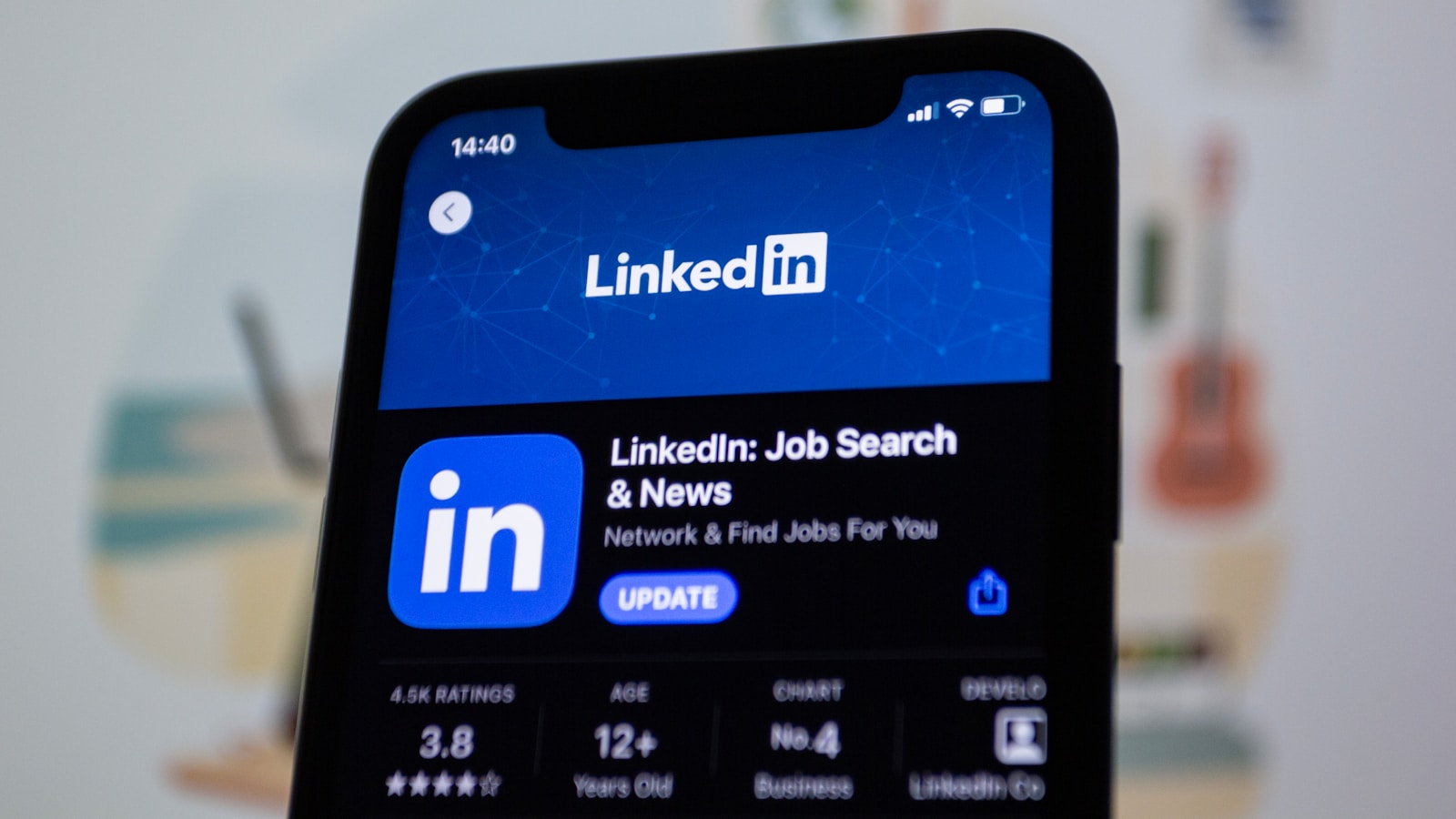A personal brand on LinkedIn shows who you are in the workplace. That’s why a good LinkedIn profile makeover matters. It’s the combination of your values, professional direction, and personality – all visible through your profile. Instead of listing job titles, your profile shows what you’ve achieved and where you want to go next. Professional branding helps people remember you. It builds trust and creates new professional opportunities.
LinkedIn is one of the most-used platforms for hiring. In 2024, around 77% of recruiters reported using LinkedIn to find candidates. More than 100 job applications are submitted every second on the platform. Seven people get hired every minute. Over 75% of job seekers say LinkedIn helped them with their career decisions. Employers are also more likely to contact people who keep their profiles up to date.
Define Your Brand and Audience
Your LinkedIn profile should tell others what makes you unique. Your key skills, personal values, future goals… Avoid vague terms. Instead, use plain language to describe your strengths and what kind of work you want. A LinkedIn profile makeover helps recruiters understand your capabilities.
To begin, ask yourself three questions: What problems do I solve? What topics excite me? What results have I delivered? Your answers help form a message you can use across your profile. This brand tells others what to expect and why you stand out.
Here are examples of good branding statements:
- “Software engineer with a focus on clean code and scalable systems.”
- “Sales manager who helps startups grow fast through smart strategy.”
- “HR advisor focused on building inclusive hiring practices.”
These messages show goals and skills at the same time. When you define your audience, think about who you want to impress. It could be hiring managers, business partners, or clients. Adjust your message to match what they care about.
Call LinkedIn Experts for Help
LinkedIn often changes how profiles look and work. New features appear every few months. Some sections get moved. Search rules shift. Staying current takes time. If you want a comprehensive profile, experts can help. New LinkedIn profile optimization service at Craftresumes.co focuses on LinkedIn profile updates. Their team rewrites your content to fit LinkedIn’s layout. They use keywords that match your goals and industry. Their writers fix summaries, job entries, skills, and more. Each profile is personalized. You also get edits until you’re satisfied. This saves hours of research and formatting. The result is a job-ready profile that speaks clearly to recruiters.
If you’d rather do it yourself, other options exist:
- Use AI tools to generate summaries and skill sections.
- Browse LinkedIn to study profiles of others in your field.
- Find formatting tools or templates for fast editing.
These methods give you control while helping speed up your process. You can still achieve an optimized and standout profile if you use the right tools and examples. The key is to stay updated and keep things professional.
Photo, Banner, and URL
The visual part of your LinkedIn profile is crucial. Profiles with a photo get 21 times more views and 36 times more messages. People trust faces. Your photo should be clear, modern, and friendly. Show your head and shoulders. Look straight into the camera. Use good lighting and wear clean, simple clothes.
This kind of photo is often called a business portrait. You don’t need a studio, but the picture must look sharp and natural. Avoid party shots, filters, or anything too casual. You want to look reliable and ready.
Next, your profile URL. The default one is long and messy. You can customize it to something simple, like linkedin.com/in/johnsmith. Here’s how:
- Open your LinkedIn profile.
- Click “Edit public profile & URL.”
- In the top right, click the pencil icon.
- Type in a short version of your name.
- Save.
Now, the banner. That’s the large background behind your photo that is important for profile optimization. Use it to add a visual message. Choose something that fits your field: a skyline, work tools, or a simple graphic with your name.
Write a Headline with Keywords
Your headline is the line under your name. Most people just write their job title. That’s not enough. A good headline says what you do, who you help, and how. Use keywords so people can find you. Think of it like a search ad.
NO ❌ “Marketing Manager”
YES ✔️ “Marketing Manager | Builds brand strategy and content for tech startups”
LinkedIn’s search engine picks up words from your headline. Use terms that match your skills. Your headline should be clear and focused.
Keep it under 220 characters. Say your job, main skill, and the value you offer. If you’re open to work, you can add that too. For professional profile enhancement, don’t use emojis, hashtags, or empty phrases.
When done well, a headline helps people see you as compelling and strategic. More people will see your profile when they search with matching keywords. Over time, that can lead to real job offers.
Tell Your Story in the About Section
The “About” section is your place to talk directly. Use 3-5 short paragraphs. Start with who you are, add what you do best. Avoid sales talk.
- Use the first person. Say “I” not “she” or “he.”
- Add numbers to show results.
- Please specify the type of roles or work you are interested in.
- End with a short note like: “Feel free to message me.”
Template: “I’m a digital designer who helps small businesses create clean, useful websites. I’ve worked with over 30 brands across retail, food, and services. My focus is mobile-first design and usability. I’m open to freelance or full-time work. Let’s connect.”
Add Results to the Experience Section
Job titles and tasks don’t say much on their own. Add real results, use numbers when possible. Say what you did, how, and what changed. Keep sentences short.
Here’s a comparison table:
| Weak Entry | Strong Entry |
| Wrote blog posts | Published 20 SEO blog posts that raised site traffic by 40% |
| Helped sales | Ran product demos that led to $60K in client deals |
| Managed interns | Trained 4 interns, 3 of whom joined the team full time |
This format of profile optimization shows you deliver value. It makes your experience more compelling. Employers want people who get results. You just need to make those results easy to see.
List Key Skills and Ask for Endorsements
Choose your top 10 skills. Put your most important ones first, and match them to your job type. Use specific terms. For example, instead of “writing,” say “technical writing” or “UX copywriting.”
Then ask coworkers or clients to endorse you. Endorsements build trust. They also improve search rank. Recruiters can filter searches based on skill matches. Make sure your top skills match your goals.
You can also ask for short recommendations. The recommendations increase the chance of being contacted by a recruiter.
Add Proof Through Media and Projects
Media files show what you’ve done. Add links or images that back up your story. Use the Featured section to highlight your best work. Don’t add everything. Choose what matters.
For example:
- Add a PDF case study.
- Link to your GitHub or Behance.
- Share a video talk you gave.
Engage with Others
Activity on LinkedIn helps more people find you. Share tips, comment on posts, or repost useful content. Write at least once per week. Thank people for their ideas and respond to comments. Join conversations, share your own LinkedIn branding tips. Be friendly, and over time, people remember you. This kind of regular action keeps your profile visible. It also helps your brand grow stronger over time.
Grow Your Network with Purpose
Find others in your role, industry, or location. When you send an invite, add a short note: “Hi, I see we work in the same field. Let’s connect.”
Tips:
- Join LinkedIn groups.
- Follow leaders in your space.
- Send kind replies when people connect.
- Check who viewed your profile.
A small network you talk to often is more useful than a huge one that ignores you!
Keep the Profile Fresh
Update your profile every few months. Enhance your professional profile by rewriting your About section. Update your banner. Review the job titles and wording. Check your profile views. Are they going up or down? Adjust based on what works. LinkedIn data shows that people with updated profiles get more visits, messages, and job offers. Treat your profile like a project. Keep it alive.
Final Thoughts on Profile Success
LinkedIn gives the best results when it shows your current self. One-time updates don’t last. Small changes and steady improvements matter more. Set a reminder to review one section each month. That habit keeps your profile fresh. Follow the steps from this guide to keep your profile simple and clear. With ongoing updates and strong professional branding, LinkedIn turns into a career tool that grows with you.
Featured Image provided by Freepik







